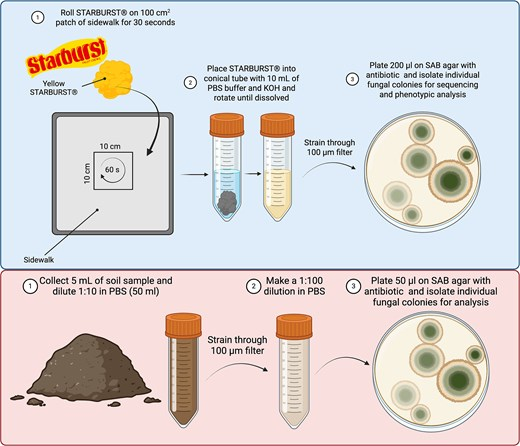Fires Help Florida’s Everglades Forests Grow Back Stronger and Greener

A new study from researchers at Yale University and Florida International University reveals that fires in Florida’s Everglades are not the disasters many imagine—they’re actually vital for the resilience and productivity of the region’s subtropical pine forests. These scientists discovered that areas in the Everglades that burn more often and more recently show higher levels of vegetation productivity than areas that have gone many years without fire.
The research, published in Science of The Total Environment in 2025, focuses on how fire frequency and timing affect the regrowth of the Everglades’ fire-adapted forests, also known as pinelands. By analyzing 45 years of satellite data, from 1978 to 2023, the team found that after a fire, the landscape’s greenness—measured through the Normalized Difference Vegetation Index (NDVI)—not only returns to normal within two years but often surpasses pre-fire levels by around 27%.
Understanding Fire’s Role in the Everglades
The Everglades National Park and Big Cypress National Preserve are home to some of the last remaining subtropical pinelands in North America. These ecosystems are naturally fire-dependent, meaning that periodic, low-intensity fires help them maintain their structure, species diversity, and ecological balance.
Historically, the Everglades fire management program, established in 1948, was the first of its kind in a national park. By the 1950s, managers had already begun using prescribed burns—controlled fires intentionally set under safe conditions—to mimic natural fire cycles. This approach has generated a unique, decades-long dataset on how the landscape responds to burning.
But in recent years, climate change and changes in land management practices have threatened to alter these natural fire regimes. More erratic rainfall patterns, hotter temperatures, and human interference can shift when and how often fires occur. That’s why researchers wanted to understand whether today’s fire patterns are still helping—or harming—the Everglades’ forests.
What the Study Found
Using machine learning and long-term satellite imagery, the team, led by Assistant Professor Sparkle Malone of Yale’s School of the Environment, studied how vegetation greenness changed after fires across South Florida. They measured NDVI, a widely used remote sensing indicator that reflects plant health and photosynthetic activity.
Their findings were clear: forests that burned more frequently and recently were healthier and more productive. Areas that hadn’t burned in over 15 years showed signs of decline, with the forests slowly transitioning from pine-dominated ecosystems to ones dominated by hardwood trees—species less adapted to fire and less resilient to disturbances.
After fires, NDVI initially dropped by about 6%, as vegetation was temporarily scorched. However, within two years, most burned areas bounced back strongly, exceeding their previous greenness by about 27%. This surge suggests that fire stimulates new growth, enhances nutrient cycling, and prevents the accumulation of dead plant material that could fuel more destructive wildfires.
The researchers also discovered that fire history—how often and how recently a fire occurred—played a major role in determining how much productivity increased. Meanwhile, climate conditions—such as rainfall and temperature—determined how quickly that recovery happened.
Why Prescribed Burns Matter
Prescribed burns, when carried out responsibly, serve multiple ecological purposes. They prevent the encroachment of invasive plant species, recycle nutrients back into the soil, and help native species regenerate. They also reduce the buildup of dry vegetation that can lead to high-severity wildfires, which burn hotter, spread faster, and cause greater long-term damage.
The Everglades’ fire-adapted ecosystems depend on frequent, low-intensity fires rather than rare, extreme ones. In contrast, western U.S. forests—where fires are less frequent but more severe—face catastrophic wildfire seasons that destroy both vegetation and soil structure. The Everglades’ model shows that maintaining natural fire cycles can actually make forests more resilient in the face of climate change.
How Technology Is Helping
To help park managers and ecologists make better decisions, the research team built a comprehensive digital application that provides detailed fire history data for the Everglades National Park and Big Cypress National Preserve.
This tool includes:
- Fire perimeters (outlining where fires occurred),
- Binary burned layers (maps showing burned vs. unburned areas), and
- Yearly fire history layers (showing when specific regions last burned).
This dataset allows scientists and managers to quantify fire dynamics across subtropical ecosystems, track vegetation recovery, and identify areas at risk of ecological transition. It’s an invaluable resource for anyone working to keep these forests healthy and balanced.
The Broader Picture: Fire and Forest Resilience
Fire is one of the most powerful forces shaping ecosystems around the world. In many regions—from African savannas to Australian bushlands and North American pine forests—fires act as natural reset buttons, clearing old vegetation and giving new growth a chance to flourish.
In fire-adapted ecosystems, many plants have evolved specific traits that depend on fire. Some pine species, for instance, have serotinous cones that only release seeds when exposed to heat. Others resprout quickly from roots or underground stems after flames pass through.
The Florida pine rocklands and wet savannas are no exception. Without regular burning, these ecosystems can become choked with hardwood trees and invasive species that alter soil chemistry, reduce biodiversity, and make the land more vulnerable to severe wildfires later on.
The new Yale-led study adds strong evidence that frequent fire supports resilience, not destruction, in the Everglades’ forests. It also highlights how climate change might complicate this delicate balance. As conditions get warmer and drier, prescribed burning programs will need to adapt to ensure that fire continues to play its beneficial role without escalating into uncontrolled wildfires.
Lessons for Other Fire-Dependent Regions
The Everglades serve as a model for other subtropical and tropical regions where fire is a natural and necessary process. The study shows that rather than suppressing fire altogether, responsible fire management is key.
In ecosystems that evolved with frequent burning, long gaps between fires can be just as damaging as excessive burning. When fire intervals become too long, vegetation changes, biodiversity declines, and forests lose their ability to recover from future disturbances.
Other fire-prone landscapes—like the longleaf pine forests of the southeastern United States and Caribbean Basin ecosystems—share these same dynamics. Lessons from South Florida can guide management strategies in these areas, especially as global climate patterns alter fire frequency and intensity.
Looking Ahead
The study underscores a simple but often misunderstood truth: not all fires are bad. In the Everglades and other fire-adapted forests, fire is essential for maintaining ecological health, diversity, and productivity.
By combining decades of fire history with modern satellite technology and machine learning, researchers now have a clearer picture of how these landscapes respond to fire—and how quickly they recover. The data-driven insights from this work can help ensure that prescribed burning continues to support the Everglades’ long-term stability, rather than being seen as a destructive force to avoid.
As one of the lead researchers emphasized, the goal is to keep monitoring how forests recover and to watch for any signs that fire responses are changing over time. If recovery patterns begin to shift, that would be a signal that fire management strategies need to be adjusted for the future.
Research Reference:
McLeod, G., Tupaj, M., Gann, D., Ross, M., & Malone, S. L. (2025). Fires enhanced productivity in fire-adapted subtropical pinelands of the Florida Everglades. Science of The Total Environment. https://doi.org/10.1016/j.scitotenv.2025.180602





